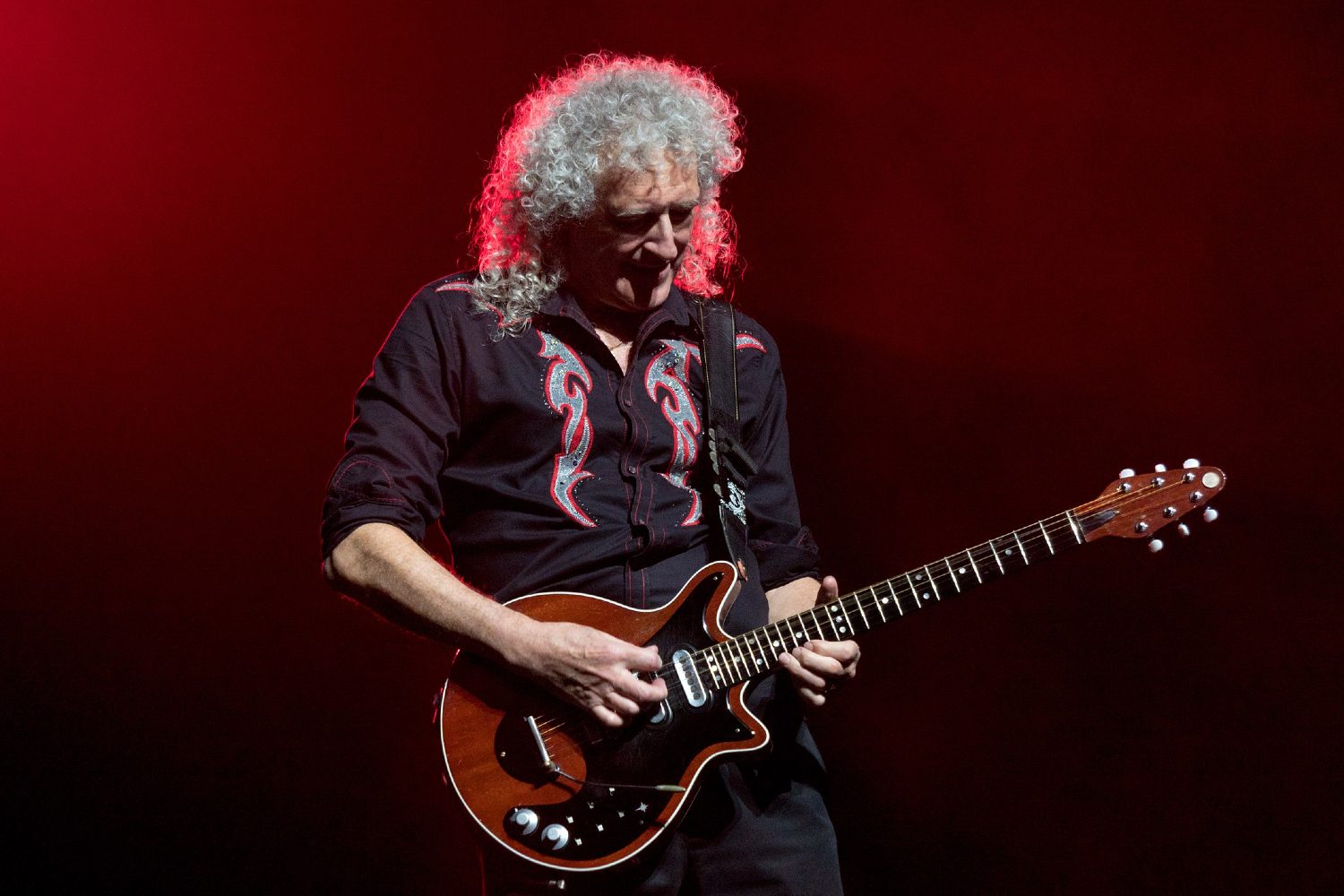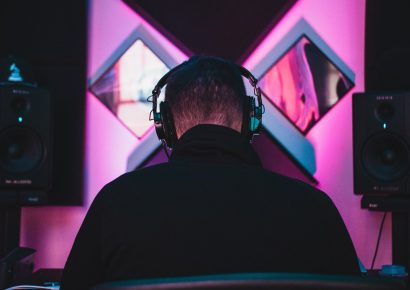From Trigger and Lucille, all the way through to the Red Special.
Musicians love their guitars – it’s like they’re a part of them, making some of these instruments iconic guitars. When Jimi Hendrix set fire to his Strat at the Astoria Theatre in 1967, he said it was an act of love: “You sacrifice things you love… I love my guitar.”
With this in mind, it’s not uncommon for them to give their guitars a name, they’re quite sentimental to a lot of them. Here are 10 musicians with famous guitar names, and the incredible stories behind their iconic guitars.
Read all the latest features, columns and more here.
Willie Nelson – Trigger
Trigger is the Martin N-20 nylon-string acoustic played by country legend Willie Nelson.
In 1969, after a concert at Floore’s County Store in Helotes, Texas, a drunk man stood on Nelson’s Baldwin, breaking it beyond repair.
Shot Jackson, a luthier in Nashville, Tennessee, offered Nelson the Martin N-20 classical guitar as a replacement, and Nelson bought it over the phone (unseen).
Twenty years later he named it after Roy Rogers’ horse ‘Trigger’.
The guitar would go on to define his sound, used in the recording of his acclaimed albums Shotgun Willie, Red Headed Stranger, and Stardust.
B.B. King – Lucille
Lucille was the name legendary blues musician B.B. King gave to his iconic guitars – usually black Gibson models, like the ES-330 or ES-335.
The name originated when King was playing a gig in Twist, Arkansas in 1949. In those days, dance halls were often heated by a burning barrel of kerosene in the middle of the dance floor.
During a performance, two drunken hooligans began to fight, eventually knocking the barrel over and setting fire to the hall.
It was evacuated, but once outside King had realised, he’d forgotten his beloved $30 Gibson, so he ran back into the burning building to retrieve it.
A few days later it was revealed the two men were fighting over a woman named Lucille, so upon learning this, King decided to coin the name for his guitars, as a reminder to never run into a burning building or get into a fight over a woman again.
He went on to write a song called ‘Lucille’, in which he talks about how the guitar got the name, and released an album of the same name.
In 1980, Gibson released a B.B. King custom model based on his ES-335.
Eric Clapton – Blackie
Blackie is the nickname Clapton gave to his favourite Fender Strat.
In 1970, Clapton switched from Gibson to Fender, largely due to his influences of Jimi Hendrix and Blind Faith bandmate Stevie Winwood.
In the same year, Clapton found the Sho-Bud guitar shop in Nashville, Tennessee. He bought six 1950s Stratocasters, and after giving one to George Harrison, Pete Townshend, and Steve Winwood, he took the best parts of the remaining three to Nashville luthier Ted Newman Jones, who assembled Blackie.
Clapton played Blackie for many years, until it was retired in 1985 due to issues with the neck.
It was used by Clapton almost exclusively for over a decade in hit recordings such as ‘I Shot the Sheriff’ and ‘Wonderful Tonight’.
Keith Richards – Micawber
‘Brown Sugar’, ‘Honky Tonk Women’ and Before They Make Me Run’ are just a few of the legendary Rolling Stones songs that Keith Richards recorded on his Micawber 1950s Telecaster.
A gift from Eric Clapton, it originally boasted a single coil pickup in the neck, but following the 1972 tour, Richards replaced it with a ‘50s Gibson PAF humbucker which he turned backwards so the magnet poles are facing the guitar’s tail end.
Other mods include converting a brass bridge to a five-string tuning and taking out the low E string.
Micawber is still one of the go-to iconic guitars for Richards after all these years, and the butterscotch finish has become synonymous with the legendary rocker.
Bo Diddley – The Twang Machine
Blues legend Bo Diddley was a pioneer in more ways than one, but made a name for himself playing rectangular guitars, the first being one that he built himself in 1945.
These guitars later became known as cigar box guitars and are still popular among folk and blues musicians to this day.
In 1958, Diddley approached Gretsch requesting a custom, and The Twang Machine was born.
The Twang Machine was styled after the rectangular cigar box guitars that he and other blues musicians had been playing, but was filled with state-of-the-art electronics.
Diddley played The Twang Machine, and other oddly shaped guitars right up until his death in 2008 at the age of 79.
Neil Young – Old Black
Most of Neil Young’s electric work is done with Old Black – a 1953 Les Paul Goldtop that has been heavily customised over the years.
There are a few stories detailing how Young acquired Old Black, some believe he traded the guitar for a ’58 Gretsch 6120 with then Buffalo Springfield bassist Jim Messina, while others say it was with Stephen Stills for the Gretsch White Falcon that Young had played up to that point.
Regardless of how he got it, there’s no doubt it’s an iconic guitar, named after the amateur paint job it was given to cover its original gold finish by a previous owner.
In 1972 Young fitted a mini humbucker from a Gibson Firebird in the bridge position, and other modifications include the Tune-o-Matic bridge, and the iconic Bigsby.
George Harrison – Lucy
Another guitar gifted by Eric Clapton on this list, George Harrison acquired his iconic red Gibson Les Paul in August 1968, naming it Lucy.
Also a Goldtop, Lucy was refinished in 1966 in an SG-style clear red, and given to Harrison in ’68 where he used it for the remainder of his time with The Beatles.
It can be seen in promotional content for ‘Revolution’ and ‘The Ballad of John and Yoko’. Lucy can also be heard during the three-way solo at the end of ‘The End’.
Harrison named the guitar after redhead comedian Lucille Ball.
Prince – The Cloud
Something that made Prince such an enigmatic figure in music was his choice of instruments.
The Cloud was one of Prince’s most iconic guitars – used in the famous 1984 film Purple Rain, which kickstarted his career alongside the platinum-selling soundtrack of the same name.
It was custom built by Minneapolis luthier Dave Rusan, and was inspired by the Jeff Levin-built Cloud bass.
Prince specified that it had to be white with gold hardware, and spades on the fingerboard, as well as featuring EMG pickups.
The iconic guitar was finished prior to filming in November 1983, and after the release of Purple Rain became Prince’s main guitar on the road from 1983 to 1999, and again in 1999-2000.
Joni Mitchell – Martin D-28
While she didn’t give it a name, Joni Mitchell’s Martin D-28 served her well throughout her career, on albums from Song to a Seagull through to For the Roses, Mitchell mostly stuck with the one guitar.
The backstory is interesting too, it belonged to a Marine Captain in Vietnam, and when enemy forces targeted the owner, the tent was hit with shrapnel and all that survived was the guitar.
The Martin was a perfect match for Mitchell, as it had exceptional intonation, allowing her to stay in tune while bringing her melodies to life in a wide range of alternate tunings.
Brian May – Red Special
The Red Special was built and designed by Queen guitarist Brian May and his father Harold, when Brian was a teenager in the ‘60s.
Sometimes referred to as the Fireplace or Old Lady, the name Red Special came from the reddish-brown colour the iconic guitar attained after being stained and painted with several layers of plastic coating.
The name Fireplace is a reference to the fact that the wood used to make the neck came from a fireplace mantel.
The guitar was designed intentionally to feed back, after May saw Jeff Beck play live, making sounds by moving the guitar in front of the amp.
May has used the Red Special on Queen albums and in live performances almost exclusively, since the band formed in 1970.
Find more on Brian May Guitars here.

